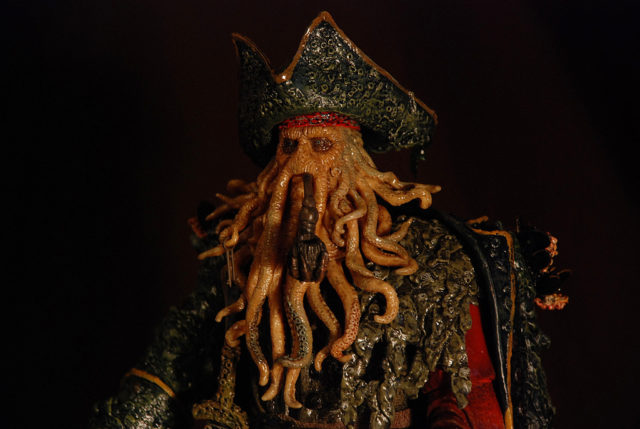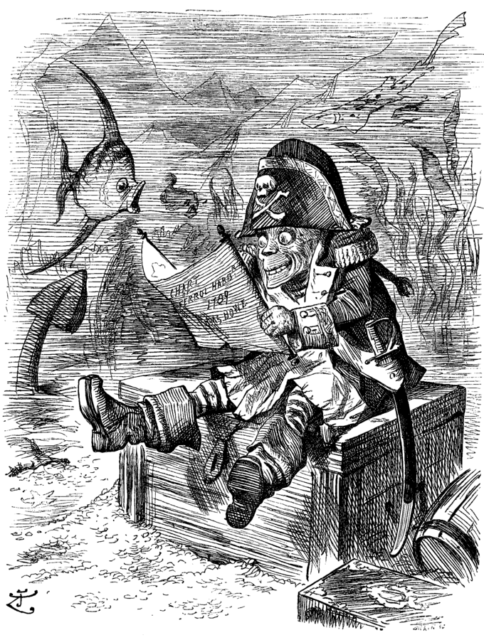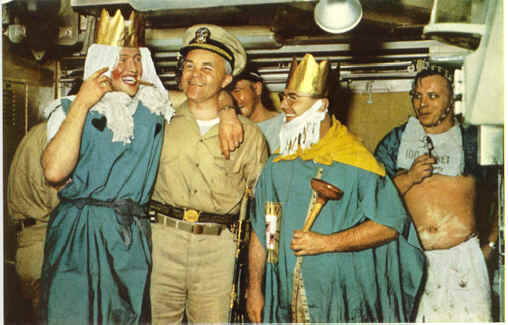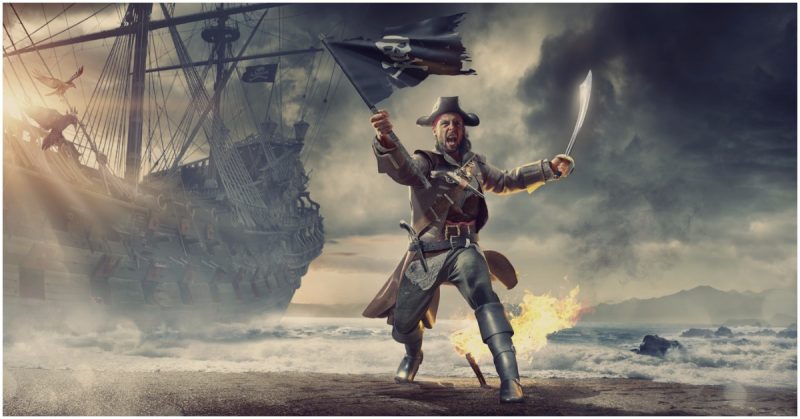There are plenty of fascinating stories and characters to be found in ocean lore. We can recall, for example, the legend of the Flying Dutchman, doomed to sail the seas forever. While we’ve seen the incarnation of this particular legend in the Pirates of the Caribbean film series, it’s not the only legend embedded in the pirate-film franchise.
Take, for instance, the narrative of Davy Jones’ Locker, which blends with the legend of the Flying Dutchman as shown in the Pirates of the Caribbean. Here, Davy Jones’ locker is depicted as a desolate and empty place where those who have crossed him are sent for punishment. Jones is further portrayed as the captain on duty who ferries drowned soldiers to the bottom of the sea to the afterlife. He goes on to abuse his role after being betrayed by his lover, the sea goddess Calypso.
A mysterious spirit of the great seas, he has an unforgettable appearance: octopus-like appendages give the illusion of a lush beard, and he has a crab claw instead of a normal hand.
But long before this reincarnation of Davy Jones, as traditional lore has it, Davy Jones’s Locker was used as a euphemism for drowned sailors or shipwrecks. Whenever a sailor drowned at sea and sank to the murky depths, he was said to have been “sent to Davy Jones’s Locker”–Davy Jones for many was their worst nightmare.

However, the origins of this nautical superstition are not fully known, with several proposals attempting to shed light on the question. Sometimes it is a pirate story and other times a bizarre tale like that of a British pub owner who was keen on kidnapping sailors.
A negative connotation almost always surrounds the figure of Davy Jones. One of the earliest known references can be found in Daniel Defoe’s Four Years Voyages of Capt. George Roberts, published in 1726, in which it says: “Some of Loe’s Company said, They would look out some things, and give me along with me when I was going away; but Ruffel told them, they should not, for he would toss them all into Davy Jones’s Locker if they did.”
Another amusing early depiction can be found in Tobias Smollett’s The Adventures of Peregrine Pickle, published in 1751: “This same Davy Jones, according to sailors, is the fiend that presides over all the evil spirits of the deep, and is often seen in various shapes, perching among the rigging on the eve of hurricanes:, shipwrecks, and other disasters to which sea-faring life is exposed, warning the devoted wretch of death and woe.”

In this story, Jones has saucer eyes and is described as a real devil. He has three rows of teeth, some horns, a tail, and even blue smoke coming out from his nostrils. It might not be the same horrifying look of Dave as seen in the Pirates of the Caribbean, but it scores high enough on the scale of how terrifying a wicked creature can look.
A 1898 dictionary associates Dave with the figure of the “Duppy,” a wicked spirit predominant in Caribbean folklore. The same dictionary also connects Jones with the biblical Jonah, from the Book of Jonah, in which he gets swallowed by a fish.
Others trace the origins of Davy Jones to a supposedly real pirate who thrived on the Indian Ocean throughout the 1630s, although he’s not one of the more famous pirates in history. Or there’s the figure of Duffer Jones, a notoriously short-sighted sailor who often found himself falling overboard.

The story involving the British pub owner is one in which Davy supposedly forced drunken sailors into his ale locker. Then he handed them over to be press ganged on to a vessel leaving the following morning. Perhaps, as some sources suggest, he just might be the pub owner referenced in the old 1594 song “Jones’s Ale is Newe.”
Linguists take a different stance on the origins. They favor the story that “Davy” was inspired by Saint David of Wales, a 6th century bishop whose name was often invoked by the sailors of Wales. The linguists believe that “Jones” is derived from the biblical Jonah.
It certainly sounds like fear and anger underpin the story of Davy Jones, but there is still one tradition that differs. In the case of the Crossing the Line Ceremony, an initiation of sailors who cross over the Equatorial line, there is the basic premise that all sailors on board become equal except one group of seamen, dubbed the Shellbacks.

The event occurs as soon as the vessel crosses the line. The Shellbacks are also called the Sons of Neptune, after the Roman counterpart of the Greek god of the seas, Poseidon, and the eldest Shellback of all becomes King Neptune. Within the initiation ceremony, Davy Jones is reenacted as the first assistant of the King.
With such vivid illustrations of Davy Jones in history, it is not surprising that his figure continually reappears in popular culture or literature. Long before The Pirates of the Caribbean, Jones gets a mention in Herman Melville’s 1851 classic novel Moby-Dick, as well as in Edgar Allan Poe’s King Pest of 1835. Or J.M. Barrie’s play and novel Peter and Wendy, where Captain Hook sings a song that goes:
Yo ho, yo ho, the pirate life,
The flag o’ skull and bones,
A merry hour, a hempen rope,
And hey for Davy Jones.

It’s fun to chase down other examples of where Jones appears in popular culture–to find him in the English translations of The Adventures of Tintin, where Captain Haddock makes references to him on a few occasions, or to check out SpongeBob SquarePants, where there is an actual locker at the bottom of the sea … in which Jones has his gym socks hidden.
One thing is certain, Davy Jones is an everlasting phenomenon and a pleasure to research.
